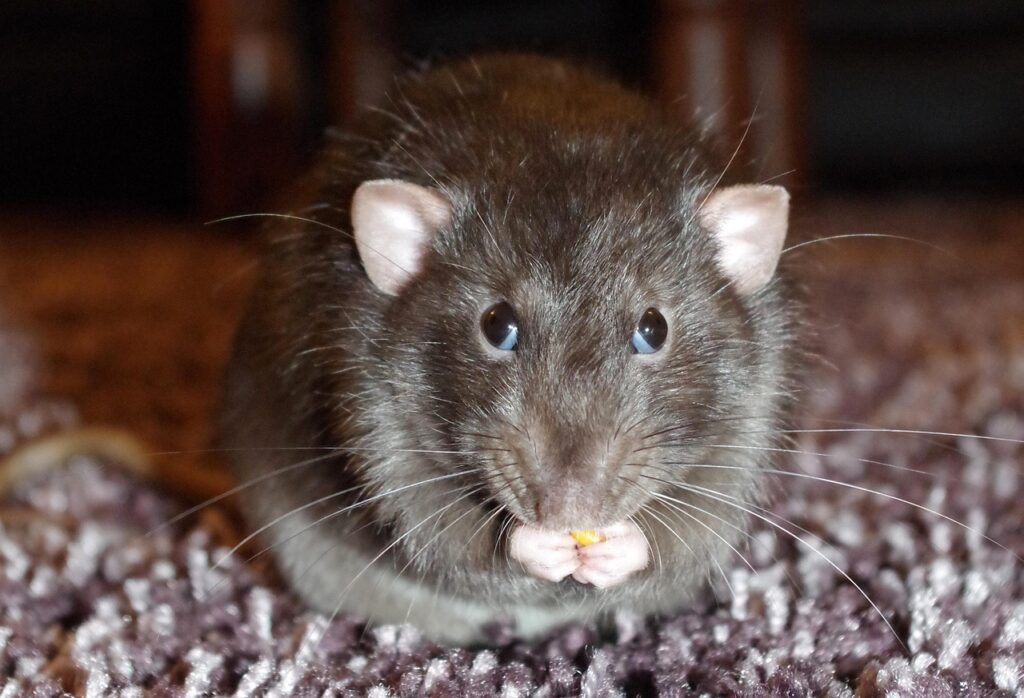Imagine a life that is free of pests. We all would probably enjoy a long and prosperous life. Unfortunately, a world without pests does not exist. We all have to worry about flies, mosquitoes, cockroaches, and (gasp) rodents!
No place is really safe unless you are proactive in eliminating them in your home, office, and yes, even in your barn.
A metal barn is a durable and reliable structure for storing equipment, housing livestock, or protecting valuable goods. However, like any other building, it is susceptible to pests and rodents that can cause significant damage and health hazards. Mice, rats, insects, and other critters can chew through wiring, contaminate feed, and create unsanitary conditions. Securing your metal barn against these unwanted invaders is essential for maintaining a clean, safe, and efficient working environment.
While we at the Lion Barns are not pest control experts, we know a thing or two about keeping rodents and other pests away from your metal barn.
The Risks of Pest Infestation
Pests and rodents in a metal barn can lead to several problems, ranging from structural damage to health concerns. Rodents, for example, are notorious for chewing through insulation, electrical wiring, and even metal panels in their search for food and shelter. Their droppings and urine can spread diseases, making the barn an unsafe place for livestock and workers. Additionally, rodent infestations can lead to fire hazards if they chew through electrical wiring, creating short circuits that may cause sparks or even fires.
Insects such as termites, ants, and beetles may also infiltrate a metal barn, especially if there are wooden elements inside. Even though metal barns are resistant to termites, any wooden beams, flooring, or storage structures inside can become vulnerable. Stored grains, hay, and animal feed attract pests like weevils and moths, leading to contamination and spoilage. A pest problem in a barn can also spread to nearby structures or homes, making it even more critical to address infestations quickly.
The presence of pests can reduce productivity and lead to costly repairs, making it essential to implement effective pest prevention strategies. Infestations can cause stress to livestock, reduce the effectiveness of stored feed, and damage expensive equipment. Preventing pests before they become a problem is the most effective way to maintain the integrity of a metal barn, protect assets, and ensure a safe and clean working environment for both humans and animals.
Sealing Entry Points to Keep Pests Out
One of the most important steps in pest-proofing your metal barn is identifying and sealing all potential entry points. Even small gaps or cracks can provide access to rodents and insects. Check the walls, doors, windows, and roof for any openings, and seal them using weatherproof caulk, steel wool, or expanding foam. Rodents can squeeze through openings as small as a dime, so it is crucial to inspect even the tiniest gaps.
Doors and windows should be properly fitted with weather stripping to prevent pests from squeezing through gaps. If your barn has ventilation openings, cover them with fine mesh screens to allow airflow while blocking insects and rodents. Garage-style doors or large barn doors may require additional reinforcement to ensure a tight seal when closed. Weatherproof rubber seals at the bottom of doors can also help prevent entry.
For areas where electrical or plumbing lines enter the barn, use steel mesh or sealant to close any gaps. Pests often use these small openings as hidden pathways into buildings. Regular inspections of these entry points can help identify new vulnerabilities before pests have a chance to establish themselves. Taking a proactive approach to sealing entryways will significantly reduce the risk of infestations and protect the barn from long-term damage.
Proper Storage of Food and Supplies
Pests are primarily attracted to food sources, so proper storage is crucial in keeping them away. If you store animal feed, grains, or hay inside the barn, use sealed, rodent-proof containers made of metal or heavy-duty plastic. Wooden storage bins, while traditional, are easier for rodents to chew through and may not provide adequate protection. Ensuring that food supplies are properly secured will make the barn a less attractive target for pests.
Avoid leaving bags of feed on the floor, as this makes it easier for rodents to access them. Instead, place containers on shelves or pallets to create an extra barrier between stored food and potential pests. Elevating storage areas also helps with ventilation, reducing the risk of moisture buildup that can attract mold and insects. Regularly inspect feed storage areas for signs of pest activity, such as gnaw marks, droppings, or torn packaging, to catch infestations early.
Cleaning up spilled feed and sweeping the barn floor daily can significantly reduce the chances of attracting unwanted guests. Even small crumbs of feed left on the floor can draw rodents and insects. Additionally, rotating stock and using older feed first will help prevent infestations from developing in forgotten supplies. Keeping food storage areas clean, organized, and well-sealed is essential for maintaining a pest-free barn.
Maintaining Cleanliness to Deter Pests
A clean barn is far less inviting to pests than one filled with debris and clutter. Rodents and insects thrive in messy, undisturbed environments where they can nest and hide. Implementing a regular cleaning schedule will help keep pests at bay and make the barn a healthier space for animals and workers.
Manure, bedding, and organic waste should be promptly removed and disposed of properly. Accumulated dirt and moisture create ideal conditions for insects such as flies and cockroaches, so keeping floors dry is essential. Using absorbent bedding for livestock and maintaining proper drainage in the barn can help reduce excess moisture. Proper ventilation will also prevent the buildup of humidity, which can attract pests like mites and mold-loving insects.
Store tools, equipment, and materials in organized spaces to reduce hiding spots for rodents. Large stacks of wood, unused equipment, or even piles of hay can provide shelter for pests. Regularly inspecting and reorganizing storage areas can help identify signs of pest activity early. By keeping the barn well-maintained and clutter-free, property owners can greatly minimize the risk of infestations and ensure a cleaner, safer working environment.
Controlling Moisture and Humidity
Moisture is another major attractant for pests, especially insects. Leaks in the roof or walls can lead to damp conditions that encourage mold growth and attract insects such as termites and cockroaches. Regularly inspect your barn for leaks and repair any damaged roofing or siding.
Proper ventilation is key to keeping the barn dry and free of excessive humidity. Install vents or fans to promote airflow, and consider using dehumidifiers in particularly humid climates. Keeping the barn dry will not only deter pests but also prevent rust and corrosion in the metal structure.
Utilizing Natural Pest Deterrents
Several natural methods can help deter pests without the need for harsh chemicals. For instance, planting pest-repelling herbs such as mint, lavender, or rosemary around the barn can discourage rodents and insects. Cats are also excellent natural rodent control agents, as they actively hunt and deter mice and rats from entering the barn.
Diatomaceous earth, a fine powder made from fossilized algae, is an effective non-toxic solution for keeping crawling insects away. Sprinkling it around entry points and storage areas can help control insect populations without harming livestock or humans.
Installing Rodent Traps and Bait Stations
Despite preventive measures, some rodents may still find their way into the barn. Using traps and bait stations can help control their population before it becomes a serious problem. Snap traps, electronic traps, and humane live traps are all effective options for catching mice and rats.
Bait stations containing rodenticides should be used with caution, especially in barns housing animals. Place them in secure locations where only rodents can access them, and always follow safety guidelines to prevent accidental ingestion by livestock or pets.
Hiring Professional Pest Control Services
If pest infestations become overwhelming, seeking professional pest control services may be necessary. Pest control experts can assess the situation and provide targeted treatments to eliminate infestations effectively. They may also offer long-term solutions such as barn fumigation, rodent-proofing measures, or ongoing maintenance plans.
Professional pest control services use specialized products and techniques that are more effective than store-bought solutions. They can also identify hidden problems that might be contributing to infestations and offer expert advice on preventing future issues.
Conclusion
Securing a metal barn against pests and rodents requires a proactive approach that includes sealing entry points, maintaining cleanliness, controlling moisture, and using natural or mechanical deterrents. By taking these preventive measures, barn owners can protect their investment, ensure the health of their animals, and maintain a safe and efficient workspace. Keeping pests out of your metal barn will contribute to a cleaner, more productive environment, whether through regular maintenance, proper food storage, or professional pest control assistance.

